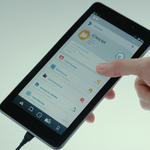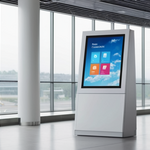
Kiosk mode represents a fundamental approach to managing shared computing environments by restricting devices to execute specific applications while simultaneously implementing robust session isolation mechanisms to prevent unauthorized data persistence and cross-user tracking through cookies and browsing artifacts. This comprehensive analysis examines how kiosk mode technologies leverage automatic session resets, InPrivate browsing sessions, cookie deletion policies, and administrative lockdown features to maintain complete separation between successive users, ensuring that sensitive information accumulated through web browsing—including tracking cookies, authentication tokens, shopping cart data, and personal preferences—are systematically cleared when users conclude their interactions with public-facing devices. The convergence of device-level restrictions with session-based data purging creates a security architecture particularly suited to environments such as retail checkouts, hospital patient intake systems, airport kiosks, and educational institutions where multiple users access shared hardware throughout operational hours, with each user expecting privacy assurance that their browsing behavior and transactions remain invisible to subsequent device users.
Understanding Kiosk Mode and the Session Separation Paradigm
The Foundational Architecture of Kiosk Mode
Kiosk mode exists as a configuration framework that fundamentally transforms general-purpose computing devices into dedicated, single-purpose terminals through enforced operational constraints managed at the operating system level. When a device enters kiosk mode, the underlying architecture prevents users from accessing system settings, installing unauthorized applications, navigating to unintended web destinations, or interacting with device features beyond those explicitly permitted by system administrators. This lockdown operates by replacing or restricting the default system shell—the Windows shell (Explorer.exe) in Windows environments or the Android launcher in mobile contexts—with an administrator-designated application that launches automatically upon user authentication and cannot be exited through conventional means. The architectural approach fundamentally differs from simple application restrictions; rather than merely preventing access to certain programs, kiosk mode creates an entirely sealed computational environment where the permitted application functions as the sole available interface between the user and the underlying device resources.
The design philosophy underlying kiosk mode recognizes that public-facing devices in high-traffic environments such as retail centers, transportation hubs, healthcare facilities, and educational institutions require absolute control over user interactions to prevent misuse, data breaches, and operational disruptions. Organizations deploying kiosk devices face distinct operational challenges: devices must facilitate specific transactions or information access while simultaneously preventing users from leveraging the same hardware for unintended purposes such as personal web browsing, social media access, or attempts to alter device configuration. The kiosk mode framework addresses these competing requirements by implementing multiple enforcement layers that operate in concert, with device-level restrictions forming the foundation while session management policies operate at the application level to ensure transient state isolation.
Defining Session Separation and Its Critical Importance
Within the context of shared device deployments, session separation refers to the technical and administrative mechanisms that ensure each user’s interaction with a kiosk device produces zero persistent artifacts accessible to subsequent users. This concept extends far beyond simple logout procedures; it encompasses comprehensive erasure of browsing history, cached content, cookies, form autofill data, authentication tokens, and any other remnants of user activity stored anywhere within the device’s persistent storage or memory systems. The necessity for complete session separation arises from privacy regulations such as the General Data Protection Regulation (GDPR) that mandate data minimization principles, compliance frameworks like the Health Insurance Portability and Accountability Act (HIPAA) that require secure handling of protected health information, and fundamental user expectations that their personal activities on public devices remain confidential.
Session separation operates as a countermeasure to several distinct privacy and security threats inherent to multi-user device environments. First, without rigorous session isolation, tracking cookies and similar persistent identifiers enable subsequent users to appear in web analytics systems as continuations of previous users’ sessions, creating confused user profiles and potential data leakage. Second, authentication tokens and session identifiers embedded in cookies can persist across users, allowing malicious individuals to impersonate legitimate users and access their accounts, financial information, or personal data through compromised credentials left on the device. Third, browser caches and temporary files accumulate personal information—search queries, visited URLs, downloaded content—that can be recovered by subsequent users with even basic technical knowledge. Session separation frameworks address these risks by implementing automated erasure procedures that execute at predetermined intervals or upon explicit user action, ensuring that each new user encounters a device in an identical initial state regardless of its previous usage history.
The Cookie Challenge in Multi-User Shared Environments
Understanding Tracking Cookie Mechanics and Their Persistence
Tracking cookies represent small text files that websites place on users’ browsers to collect data about online activities, establish unique user identifiers, and enable personalized experiences across multiple website visits. These cookies function by assigning unique identifiers to individual users, storing information such as geographic location, device specifications, browsing history, purchasing behavior, search queries, and specific actions taken on websites. The tracking cookie ecosystem distinguishes between first-party cookies set by websites users directly visit and third-party cookies created by external advertisers or analytics services that follow users across multiple websites, enabling cross-site tracking profiles that advertisers use to target users with relevant advertisements based on their accumulated browsing behavior.
The persistence characteristics of cookies present particular challenges in shared device environments where session separation represents a critical security requirement. Cookies typically include expiration dates, but many tracking cookies persist for extended periods—sometimes remaining valid for months or years—allowing them to accumulate across numerous user sessions on a shared device. Without active removal mechanisms, cookies from the first user to access a kiosk device could theoretically influence web application behavior for hundreds of subsequent users, creating cross-user contamination that violates fundamental privacy principles and potentially exposes sensitive information. Moreover, authentication cookies that remain on a device after a user logs out create serious security vulnerabilities; a subsequent user could potentially access the previous user’s email account, banking portal, medical records, or other sensitive services if authentication sessions persist through cookie retention.
The technical infrastructure supporting cookie-based tracking has evolved in response to privacy regulations, with major browser vendors implementing new protections. Mozilla Firefox and Apple Safari now block third-party tracking cookies by default through mechanisms like Firefox’s Enhanced Tracking Protection and Safari’s Intelligent Tracking Prevention features. However, these browser-level protections offer limited value in kiosk environments where default configurations may not sufficiently restrict cookie behavior and where the shared nature of the device creates fundamentally different privacy requirements than personal computing devices.
Privacy Regulations and Cookie Compliance in Shared Device Contexts
The regulatory landscape surrounding cookies has become increasingly stringent, with multiple jurisdictions establishing explicit requirements for cookie consent and data protection that create particular complexities for organizations deploying shared kiosk devices. The European Union’s General Data Protection Regulation (GDPR) and accompanying ePrivacy Directive establish that websites must obtain explicit, informed consent from users before placing any tracking cookies on their devices, with certain narrow exceptions for strictly necessary cookies that enable core website functionality. The GDPR defines cookies as personal data when they enable identification or profiling of individuals, establishing that cookie collection falls within GDPR’s comprehensive regulatory framework requiring lawful basis for processing, transparency about data usage, and respect for user rights including data deletion and tracking preference signals.
The California Consumer Privacy Act (CCPA) and its successor California Privacy Rights Act (CPRA) establish a distinct regulatory approach centered on consumer rights to know what data companies collect, delete collected data, opt out of data sales, and request information about data sharing practices. Unlike the GDPR’s consent-first model, CCPA/CPRA operates primarily through opt-out mechanisms that empower consumers to restrict data collection and sale after the fact. For organizations operating kiosk devices that collect user data through cookies or similar tracking mechanisms, compliance with these evolving regulations requires documented consent mechanisms, transparent privacy policies explaining cookie usage, and technical infrastructure supporting user requests to delete data or opt out of tracking.
In shared device environments like healthcare facilities subject to HIPAA regulations, cookie management takes on heightened importance because browsing activities might inadvertently expose protected health information. HIPAA compliance requires that healthcare organizations implement security measures protecting any device, network, or application that could access electronic protected health information, which extends to kiosk devices used for patient check-in or appointment scheduling. Similarly, retail organizations processing payment card data through kiosk devices must comply with the Payment Card Industry Data Security Standard (PCI DSS), which mandates encryption of sensitive data and comprehensive logging of data access, extending to requirements about cookie handling and session management in payment processing contexts.
Technical Mechanisms for Session Separation in Kiosk Deployments
InPrivate Browsing Sessions and Protected Data Architecture
Microsoft Edge kiosk mode implementations leverage a critical technical mechanism—InPrivate browsing sessions—that establishes a protected data architecture preventing cookies and other browsing artifacts from persisting to the device’s permanent storage. When Microsoft Edge operates in kiosk mode, whether configured for digital signage or public browsing scenarios, the browser automatically executes all web transactions within an InPrivate session that maintains temporary state in memory rather than persisting data to disk. This architectural choice means that cookies set by websites remain ephemeral; they exist only during the current browsing session and disappear entirely when the browser closes, regardless of the cookies’ specified expiration dates or persistence flags.
The InPrivate implementation represents a conscious design decision that diverges from standard browser behavior where cookies automatically persist to disk storage accessible across device reboots and multiple application restarts. By confining cookie storage to volatile memory, InPrivate browsing sessions ensure that no legitimate mechanism exists for cookies to survive the termination of a kiosk session, automatically providing session separation without requiring explicit cookie deletion code or administrative intervention. This approach proves particularly effective because it operates at the browser engine level, intercepting cookie write operations before they access persistent storage and ensuring that even sophisticated website scripts cannot circumvent the protection through alternative data storage mechanisms like local storage or indexed database implementations that might otherwise preserve data across sessions.
However, the InPrivate implementation creates specific challenges when deployed in certain enterprise contexts. A significant technical issue emerges when InPrivate sessions interact with conditional access policies in enterprise identity systems; because InPrivate sessions deliberately prevent data persistence and device details transmission to protect user privacy, enterprise conditional access systems may interpret the absence of expected device telemetry signals as a non-compliant device state and block access to protected resources even when accessing from a verified, managed kiosk device. Organizations addressing this challenge must implement alternative configurations that trade some privacy benefits of InPrivate mode for compatibility with conditional access policies, typically by running Microsoft Edge with standard browsing rather than InPrivate mode while relying on other session separation mechanisms to protect user privacy.

Automatic Session Reset and Idle Timeout Mechanisms
Kiosk implementations across multiple platforms employ automatic session reset functionality that monitors user inactivity and triggers comprehensive session cleanup when devices remain untouched for administrator-specified duration intervals. Microsoft Edge kiosk mode supports configurable idle timeout parameters through the `–kiosk-idle-timeout-minutes` command-line argument, enabling administrators to specify reset intervals ranging from one to 1,440 minutes (full day), with default values of zero (disabled) for full-screen signage mode and five minutes for public browsing mode. When an idle timeout triggers, Microsoft Edge terminates the browsing session, clears all browsing data including cookies, cache, and downloaded files, and navigates the browser back to its configured default homepage, presenting subsequent users with a clean browsing environment identical to the initial state.
The idle timeout mechanism addresses a prevalent real-world scenario where users abandon kiosk devices without explicitly logging out or terminating their sessions. In high-traffic public environments like retail stores, airports, or healthcare facilities, users frequently leave devices unattended when their transactions conclude or interruptions occur, yet they may not explicitly trigger logout procedures. Without automatic session resets, these abandoned sessions accumulate on devices throughout operating hours, with cookies and authentication tokens persisting and potentially exposing sensitive information to subsequent users who approach the device. Idle timeouts automatically reclaim abandoned sessions, erasing user data and restoring devices to baseline states without requiring user intervention or human monitoring to detect abandoned sessions and manually reset devices.
Implementation of idle timeout mechanisms requires careful calibration to balance security benefits against operational usability considerations. Excessively aggressive timeout intervals create frustrating user experiences where legitimate activities like carefully reading displayed information or deliberate pauses during transaction completion trigger unexpected session terminations that discard user progress. Conversely, insufficiently aggressive timeouts fail to provide adequate protection against abandoned session risks and data leakage in high-traffic environments. Best practice implementations establish timeout intervals based on typical task duration patterns for specific use cases—patient check-in kiosks might employ five-to-ten-minute timeouts because patient intake typically completes within that window, while information access kiosks might extend timeouts to fifteen or twenty minutes to accommodate users who spend longer reviewing information before departing.
Explicit Session Termination Through End Session Buttons
Beyond automatic idle-triggered resets, kiosk implementations commonly provide explicit session termination mechanisms in the form of “End Session” buttons prominently displayed within the kiosk interface, enabling users to deliberately conclude their sessions and trigger immediate session cleanup before departing the device. When users click End Session buttons, kiosk systems execute comprehensive data deletion procedures identical to or even more thorough than those triggered by idle timeouts—clearing cookies, cache, browsing history, form autofill data, downloaded files, and authentication tokens—before navigating the kiosk back to its default state. The availability of explicit End Session buttons serves multiple purposes: it respects user agency by allowing deliberate session termination rather than relying solely on automatic timeouts, it acknowledges the privacy concerns of users who wish to ensure their sessions are cleared immediately after sensitive activities like banking transactions, and it provides a recovery mechanism for users who realize they’ve encountered their session timeout alert and want to resume their session activity rather than allowing the timeout to complete.
The Microsoft Kiosk Browser application on Windows devices includes an End Session button policy that administrators can enable or disable through Intune management, controlling whether users see the session termination button in the browser interface. When enabled and clicked by a user, the End Session button triggers an explicit confirmation dialog asking users to verify they want to terminate their session, then proceeds to clear all browsing data (cache, cookies, form data) and return the browser to its default homepage. This two-step process—button click followed by confirmation—prevents accidental session termination while still providing users with explicit control over their session lifecycle. For sensitive transaction types such as banking, healthcare portals, or payment processing, providing prominent End Session buttons becomes a security best practice that protects users and organizations by ensuring users can confidently terminate sessions before walking away from devices, verifying that their personal information has been cleared before subsequent users access the kiosk.
Privacy Protection Through Comprehensive Data Deletion Policies
Multi-Layer Cookie and Data Deletion Architecture
Kiosk implementations employ multi-layer data deletion approaches that operate at distinct architectural levels to ensure comprehensive erasure of cookies, cache, and related browsing artifacts despite potential technical complexity or edge cases that single-layer approaches might fail to address. The foundational deletion layer operates within the browser engine itself, with kiosk browsers configured to automatically clear cookies upon browsing session completion, cache deletion upon exit, and browsing history purging before each new user session commences. Beyond browser-level deletion, kiosk implementations often employ operating system-level mechanisms that wipe temporary directories, browser profile directories, and other storage locations that browsers use for caching and temporary file storage.
Kiosk Pro, a specialized kiosk application for iOS and Android devices, implements a “Clear Cookies & Session Storage On Content Refresh” feature that automatically clears any cookies and HTML5 session storage set by websites when specific trigger events occur. These trigger events include idle time limit execution, refresh homepage timer execution, users tapping the home icon in the navigation bar, kiosk system API calls to trigger idle timer functionality, or other administrator-configured events. The HTML5 session storage clearing proves particularly important in modern web application architectures where websites increasingly rely on client-side storage mechanisms beyond traditional cookies—session storage, local storage, and indexed databases—to persist user state and tracking data. By clearing these alternative storage mechanisms alongside cookie deletion, Kiosk Pro ensures that websites cannot circumvent cookie-based session separation through alternate data persistence techniques.
The multi-layer approach recognizes that modern web applications employ increasingly sophisticated data persistence strategies, and relying solely on cookie deletion leaves gaps where websites could retain user information through localStorage, sessionStorage, service worker caches, or IndexedDB implementations that continue functioning even after cookies are cleared. Comprehensive session separation requires that all these storage mechanisms be wiped in coordinated fashion; some kiosk implementations provide configuration options allowing administrators to exclude specific cookies or domains from automatic deletion when particular websites require persistent state across user sessions, but these exceptions are carefully evaluated to ensure they don’t undermine overall session separation security.
Content Filtering and URL Whitelisting for Tracking Prevention
Beyond session data deletion, kiosk implementations employ content filtering and URL whitelisting mechanisms that prevent users from accessing websites known to perform extensive tracking or that expose vulnerable surfaces for unauthorized data collection. Kiosk browsers support URL allow-list and block-list policies enabling administrators to explicitly specify which websites users may access; for example, an information kiosk in a public library might configure an allow-list containing only URLs hosted on the library’s website, preventing users from navigating to external websites that might deploy tracking cookies or malicious content. This approach contrasts with public internet browsing where users can navigate to arbitrary websites; kiosk implementations reverse this default by assuming a “deny unless explicitly permitted” posture rather than the standard “permit unless explicitly denied” approach.
The URL whitelisting approach provides multiple security and privacy benefits beyond simple tracking prevention. By restricting accessible websites, kiosk administrators prevent users from encountering malicious websites that might exploit browser vulnerabilities or conduct phishing attacks designed to compromise user credentials. URL whitelisting also limits opportunities for social engineering attacks where users might be tricked into revealing personal information or credentials to fraudulent websites masquerading as legitimate services. From a privacy perspective, URL whitelisting prevents websites that collect extensive tracking data through cookies and similar mechanisms from even loading on kiosk devices, ensuring users cannot inadvertently visit tracking-heavy websites that would compromise their privacy regardless of cookie deletion features.
Content filtering mechanisms operating within kiosk browsers can also block third-party scripts and cookies at the network level before they load on the device. Some kiosk implementations support host-list based filtering similar to ad-blocking approaches, where administrators configure lists of known tracking domains and advertising networks that should be blocked, preventing those domains from loading any content or setting any cookies on kiosk devices. This approach proves particularly effective for preventing invisible tracking mechanisms—scripts that load in page backgrounds without user knowledge and transmit browsing data to third-party analytics and advertising services—from functioning on kiosk devices.
Session Storage Retention Exceptions and Targeted Cookie Preservation
While comprehensive session isolation forms the foundation of kiosk security architectures, certain deployment scenarios require limited exceptions where specific cookies or session data must persist across user sessions to maintain application functionality. Healthcare applications, educational platforms, and specialized business software sometimes require server-side session state or persistent application configuration that cannot function within a completely stateless session model. Kiosk Pro supports a “Retain Cookies On” configuration option enabling administrators to specify particular domains or URLs where cookies should be preserved during session clearing operations, allowing specific websites to maintain functionality while other websites experience full session separation.
The configuration of cookie retention exceptions requires careful security evaluation to ensure exceptions don’t create data leakage risks that undermine overall kiosk security posture. Administrators implementing retention exceptions typically verify that retained cookies contain only technical session identifiers or application configuration data rather than personal user information, that retained cookies have appropriate expiration dates so they cannot accumulate indefinitely across sessions, and that retained applications implement their own session timeout mechanisms separate from the kiosk’s session management to prevent abandoned sessions from persisting. For example, an educational kiosk running specialized testing software might retain cookies required for the testing application to function while clearing all cookies from web browsers used for supplementary functions, ensuring that test-related functionality operates while still protecting the privacy of any ancillary browsing activities.
Some kiosk implementations support “cookie extractors” or preloaded cookie mechanisms that enable administrators to inject specific cookies into kiosk sessions at initialization time, providing necessary session state or authentication information without relying on persistent cookie storage across user sessions. This approach allows kiosk applications to access required functionality through temporary cookies loaded at each session start rather than through cookies that accumulate across sessions; once the session concludes and the kiosk resets, the temporary cookies automatically disappear with no possibility of persisting to subsequent users. This pattern provides an appealing middle ground between complete statelessness and full cookie retention, enabling specific required functionality while maintaining robust session isolation.
Platform-Specific Implementations and Configuration Approaches
Windows Kiosk Mode Configuration Through Assigned Access and Shell Launcher
Windows operating systems support two distinct mechanisms for implementing single-application kiosk functionality: Assigned Access and Shell Launcher, each providing different enforcement models appropriate for distinct deployment scenarios. Assigned Access configures devices to execute a single Universal Windows Platform (UWP) application or Microsoft Edge browser in full screen above the lock screen, ensuring the selected application launches automatically when the designated kiosk account signs in and automatically restarts if a user closes the application, making the application essentially un-closable through normal user actions. Shell Launcher implements kiosk functionality by replacing the Windows shell (Explorer.exe) that normally provides the desktop, start menu, and taskbar with an administrator-specified Windows desktop application, transforming the entire user experience into a custom application interface that becomes the sole interaction surface.
The Assigned Access approach proves particularly effective for browser-based kiosk implementations where organizations want users to access web applications within Microsoft Edge while benefiting from the browser’s built-in isolation and sandboxing mechanisms. Assigned Access integrated with Microsoft Edge enables organizations to deploy single-application kiosk instances where users access specific websites through Edge while the browser’s kiosk mode features—automatic InPrivate sessions, idle timeout resets, URL filtering—provide additional security layering. Windows Configuration Designer, a tool provided by Microsoft for administrators, includes a dedicated kiosk wizard that guides configuration of both Assigned Access and Shell Launcher deployments, enabling administrators to specify kiosk applications, user accounts, timeout intervals, and other parameters through a graphical interface rather than manual XML editing.
Multi-app kiosk mode on Windows allows devices to run multiple pre-approved applications while still restricting access to system settings and preventing users from launching arbitrary programs. Multi-app kiosk configurations might allow retail employees to access inventory management, point-of-sale, and communication applications while preventing access to web browsers, games, or entertainment applications that would distract from work duties. The Assigned Access feature supports multi-app kiosk configuration by allowing administrators to specify a set of applications users can launch, create custom Start menus showing only those approved applications, and enforce restrictions preventing users from accessing Settings, Run dialogs, or other system administration interfaces.
Windows kiosk implementations commonly employ automatic sign-in to eliminate login prompts and streamline the user experience; devices configured with automatic sign-in log in with the designated kiosk account immediately upon boot, launching the kiosk application without requiring users to enter credentials. This configuration improves user experience but requires careful security consideration because the kiosk account’s credentials are stored in registry keys using reversible encryption rather than one-way hashing, technically allowing an administrator with physical device access to recover the password. Organizations implementing automatic sign-in typically use low-privilege local accounts with randomly generated passwords that are not used elsewhere in the infrastructure, minimizing risk if passwords are compromised through physical device tampering.

Microsoft Edge Kiosk Mode Configuration and Policy Management
Microsoft Edge implements native kiosk mode support directly within the browser, providing administrators with granular control over browser behavior through command-line arguments and Group Policies that can be deployed through Windows Configuration Designer, Group Policy Objects in domain environments, or Microsoft Intune for cloud-managed deployments. Microsoft Edge kiosk mode supports two distinct lockdown experiences optimized for different use cases: Digital/Interactive Signage mode designed for displaying specific websites in full-screen mode with minimal browser controls, and Public Browsing mode providing limited multi-tab functionality suitable for environments where users need more flexible web access within constrained parameters.
Both Microsoft Edge kiosk mode experiences run within automatic InPrivate sessions ensuring cookie persistence protection, implement reset-on-inactivity functionality with configurable timeout intervals, block full-screen toggling through F11 keys and developer tools access through F12 keys, and prevent users from opening new browser windows or tabs through keyboard shortcuts, collectively creating a hardened browser environment resistant to user attempts to circumvent intended restrictions. The Digital Signage experience provides maximum lockdown with single-site display in true full-screen mode, no multi-tab support, restricted address bar access, and blocked ability to open new windows, making this mode appropriate for unattended displays or public information kiosks where users should have absolutely no deviation from the intended content.
The Public Browsing experience provides more flexibility by allowing users to open multiple tabs and navigate between URLs, while still maintaining restricted website access, disabled settings access, and automatic session resets. Public Browsing mode supports features like back and forward navigation buttons, browser history access, and favorites management, enabling scenarios where users need to browse multiple related websites within an organization’s web presence but should be prevented from accessing arbitrary external websites. Administrators configure Public Browsing mode through policies specifying allowed URL patterns and blocked URL patterns, enabling fine-grained control over which websites users can access; for example, a hospital kiosk might allow access to all URLs on the hospital’s domain while blocking access to unrelated websites, or an airport kiosk might allow access to airline booking systems and airport maps while preventing access to news sites or entertainment services.
Microsoft Edge kiosk mode supports comprehensive policy controls through Group Policy Objects and MDM platforms like Microsoft Intune, enabling administrators to specify allowed and blocked websites, configure idle timeout intervals, disable downloads or restrict download locations, manage favorites and bookmarks displayed to users, control print functionality, and modify various other browser behaviors. The policy infrastructure allows administrators to deploy consistent kiosk configurations across dozens or hundreds of devices through centralized management platforms rather than manually configuring each device, dramatically reducing deployment time and ensuring consistency across distributed kiosk deployments.
Android Kiosk Mode and Mobile Device Management Configuration
Android kiosk mode implementations leverage Device Owner Mode or Managed Profile mechanisms to enforce strict application and system restrictions at the operating system level, creating lockdown enforced by Android’s security architecture rather than relying on application-level restrictions alone. Device Owner Mode, the most restrictive Android kiosk implementation, grants a designated Mobile Device Management profile administrative control over the entire device, enabling the MDM platform to hide all applications except those explicitly whitelisted, disable system buttons and gestures, prevent access to Settings, restrict notification display, and control numerous other device behaviors. When Device Owner Mode restricts a device to a single application, users encounter an entirely locked-down experience where no home button, recent apps button, status bar, or other system interface elements appear; the kiosk application occupies the entire screen and cannot be exited through normal user actions.
Android’s Device Policy Controller (DPC) interface enables MDM platforms to query and modify extensive device state information through API calls, allowing MDM administrators to implement sophisticated deployment scenarios. Mobile Device Management platforms deploy DPC agents to Android devices, enabling remote configuration of kiosk restrictions, real-time monitoring of device status and compliance, deployment of software updates, and enforcement of security policies like device encryption or vulnerability patching. The MDM platform maintains centralized control over device configurations, meaning administrators can change kiosk settings, update application allowlists, modify timeout intervals, or push emergency security updates to large device fleets without physically visiting each device.
Cookie management in Android kiosk deployments depends heavily on the specific browser or web application running in kiosk mode and the MDM platform’s capabilities for managing browser-level settings. Some specialized kiosk browsers for Android, such as Fully Kiosk Browser and Kiosk Pro applications, include native settings for enabling third-party cookies, configuring session storage clearing behavior, and managing cookie retention exceptions. Other Android kiosk deployments rely on the default Chromium WebView browser component included with Android, which implements third-party cookie blocking through Google’s Privacy Sandbox initiatives but allows administrators to override these settings through MDM policies if needed for specific applications.
The iOS kiosk implementation landscape differs somewhat from Android due to Apple’s distinct architecture and MDM capabilities. iOS kiosk mode supports Guided Access (also called App Lock) through built-in accessibility features or through MDM platforms, enabling administrators to lock devices to single applications and restrict gesture-based exits. iOS 14 and later versions implement Intelligent Tracking Prevention through Apple’s WKWebView browser component, automatically blocking third-party cookies and cross-site tracking by default, with users able to manually enable cross-website tracking in Settings if specific applications require it. Apple’s approach prevents MDM administrators from remotely enabling third-party cookies, requiring users to manually enable tracking through Settings if applications need it, which some organizations find limiting but which prioritizes user privacy by making tracking opt-in rather than opt-out.
Security and Compliance Considerations in Kiosk Deployments
Regulatory Compliance Frameworks and Kiosk Architecture
Organizations deploying kiosk devices must carefully evaluate compliance requirements specific to their industries and the data types processed through kiosk devices, with compliance considerations influencing architecture decisions about session management, data deletion, and cookie handling policies. Healthcare organizations subject to HIPAA must ensure that any kiosk device accessing electronic protected health information implements appropriate security measures including access controls, encryption of sensitive data, automatic session timeouts when devices are unattended, and audit logging of information access. HIPAA compliance extends beyond patient-facing kiosks to employee-facing devices used for scheduling, record access, or communication within healthcare environments; any device that could potentially expose protected health information requires HIPAA-compliant security architecture.
Financial services organizations and retail environments processing payment card data must comply with the Payment Card Industry Data Security Standard (PCI DSS), which establishes security requirements including encryption of cardholder data, implementation of strong access controls, deployment of intrusion detection systems, and maintenance of comprehensive audit logs documenting all access to systems processing cardholder information. PCI DSS compliance extends to kiosk devices used for payment acceptance, requiring organizations to implement automatic session timeouts preventing abandoned sessions from exposing payment processing interfaces, ensure cookies and other session artifacts are cleared between transactions preventing cross-session data leakage, and implement network segmentation isolating payment kiosks from general corporate networks.
Organizations operating in European Union jurisdictions must comply with GDPR requirements that extend to kiosk devices collecting user data. GDPR mandates that organizations obtain explicit consent before collecting personal data through tracking cookies or similar mechanisms, maintain transparent documentation about data collection purposes, implement data protection by design ensuring privacy is considered throughout system architecture, and enable users to exercise data subject rights including accessing collected data and requesting deletion. For kiosk deployments, GDPR compliance means implementing visible privacy notices explaining what data the kiosk collects through cookies and similar mechanisms, providing users with cookie consent choices, ensuring cookies are deleted at session completion fulfilling data minimization principles, and maintaining audit trails demonstrating compliance with user requests to delete their data.
The California Consumer Privacy Act and similar US state privacy laws establish rights-based privacy frameworks where consumers can request information about data collection, demand deletion of collected data, and opt out of data sales or sharing; organizations deploying kiosk devices in California or to California residents must implement infrastructure supporting these consumer rights, including the ability to identify and delete data associated with specific users upon request. Many organizations implement unified privacy compliance platforms supporting multiple regulatory frameworks simultaneously, enabling single technical implementations that satisfy GDPR, CCPA, state privacy laws, and industry-specific compliance requirements through overlapping controls addressing the most stringent requirements.
Physical Security and Endpoint Tampering Considerations
While session management through cookies and session data deletion addresses logical security threats from malicious users attempting to access previous users’ data, comprehensive kiosk security architecture must also address physical security threats from individuals attempting to tamper with device hardware or underlying software to circumvent intended restrictions. Mobile Device Management platforms work in conjunction with endpoint detection and response solutions to monitor for unauthorized modifications to kiosk device software, detect attempts to disable security features, and alert administrators when devices report anomalous security status. Organizations implementing distributed kiosk deployments often implement remote attestation mechanisms where devices periodically communicate with backend servers providing cryptographic evidence of their current security state, enabling detection of devices that have been physically manipulated or software-modified.
The authentication mechanisms protecting kiosk administrative access require careful security consideration; weak or shared administrative credentials enable any employee or visitor who gains knowledge of those credentials to reconfigure kiosks, disable session isolation features, or extract user data from devices. Best practice kiosk deployments implement strong authentication for administrative access using multi-factor authentication, restrict administrative access to specific IT personnel, maintain audit logs of all administrative changes to kiosk configurations, and establish procedures for immediately invalidating credentials if employees with administrative access leave organizations or move to different roles.
Physical security measures surrounding kiosk deployments complement logical security controls; kiosk devices should be securely mounted to prevent casual theft, located in monitored areas with regular staff presence, and equipped with tamper-evident indicators alerting administrators to any physical manipulation attempts. Organizations deploying kiosks handling sensitive transactions should consider enclosing devices in theft-resistant enclosures, positioning devices to minimize visibility of screens to shoulder surfers who might observe sensitive data, and implementing privacy filters restricting screen visibility from angles other than directly in front of the device.
Practical Deployment Strategies and Best Practices
Comprehensive Session Timeout and Data Deletion Implementation
Organizations implementing robust session separation in kiosk deployments should establish layered session timeout mechanisms combining automatic idle timeout with explicit user-controlled session termination options, each triggering comprehensive data deletion procedures. Best practice implementations configure idle timeouts that align with typical task duration patterns for specific use cases, with healthcare kiosks often using five-to-ten-minute timeouts appropriate for patient intake forms, retail kiosks using ten-to-fifteen-minute timeouts for transactions, and information access kiosks using twenty-to-thirty-minute timeouts for information browsing. Beyond automatic timeouts, organizations should prominently display End Session buttons visible to users, explicitly communicate that users should click End Session before departing the device, and verify that clicking End Session triggers comprehensive clearing of all browsing data including cookies, cache, form autofill, and authentication tokens.
Session data deletion procedures should execute at multiple levels: at the browser level ensuring all cookies are deleted when sessions conclude, at the application level ensuring any application-specific session data is cleared, and at the operating system level ensuring temporary directories and browser profile caches are wiped. For Windows implementations, organizations might schedule periodic PowerShell scripts or automatic maintenance tasks that clear temporary directories and browser cache locations in addition to browser-level cookie clearing mechanisms, ensuring comprehensive data deletion despite potential edge cases where specific data types might not be fully cleared through browser-only deletion procedures.
URL Allow-listing and Content Filtering Strategies
Organizations deploying browser-based kiosks should implement explicit URL allow-listing rather than relying on block-lists to prevent access to dangerous websites, because allow-listing creates a “secure by default” posture where only explicitly approved websites are accessible, while block-listing creates a “vulnerable by default” posture where new malicious websites remain accessible until administrators manually add them to block-lists. URL allow-lists should be scoped narrowly to only the websites required for intended kiosk functionality; for example, a hospital check-in kiosk should allow only URLs on the hospital’s domain rather than broadly allowing all HTTPS websites, reducing the attack surface and ensuring users cannot accidentally or deliberately navigate to malicious or tracking-heavy websites.
When kiosk deployments require access to multiple websites or need to accommodate some user flexibility in browsing, administrators should implement content filtering at the network or browser level to block known tracking domains, advertisement networks, and malicious websites even when allow-listing grants access to certain domains. Some kiosk browsers support host-list filtering where administrators configure lists of known tracking domains that should be blocked, preventing those domains from loading tracking cookies or analytics scripts even if accessed through allowed websites. Organizations can source tracking domain block-lists from community projects maintaining lists of known ad networks and tracking services, downloading regularly updated lists and distributing them to kiosk devices through MDM platforms.

Monitoring, Auditing, and Incident Response for Kiosk Devices
Organizations managing distributed kiosk deployments should implement comprehensive monitoring and auditing enabling detection of security incidents or policy violations. Remote monitoring solutions should track device availability and health status, alert administrators when devices report errors or fail health checks, and maintain usage logs showing when devices are in use and what applications are accessed. For browser-based kiosks, usage logs should capture information about websites visited, search queries entered, and application features used, enabling administrators to verify that kiosks are being used for intended purposes and not being misused for unauthorized browsing.
Audit logging should capture attempts to circumvent kiosk restrictions, including failed attempts to open unapproved applications, attempts to access Settings or other restricted interfaces, or attempts to modify kiosk configuration files. These audit logs assist with incident investigation if kiosk devices are suspected to have been compromised; administrators can review logs showing exactly when unauthorized actions occurred and from which user accounts or device access points they originated. Organizations should establish incident response procedures defining how administrators respond when monitoring systems detect potential security breaches, unusual usage patterns, or policy violations on kiosk devices, including procedures for isolating affected devices, investigating security incidents, and remediating vulnerabilities.
Regular security assessments evaluating kiosk deployments help identify vulnerabilities and configuration gaps; organizations should periodically audit kiosk configurations verifying that idle timeouts are appropriately configured, session data deletion is functioning correctly, URL access controls are properly enforced, and administrative access controls are restricted to appropriate personnel. Penetration testing against kiosk devices can identify methods determined attackers might use to circumvent intended restrictions, enabling organizations to address vulnerabilities before attackers exploit them in real-world deployments.
Concluding Kiosk Mode’s Isolated Sessions
Kiosk mode emerges as a comprehensive security architecture addressing the complex challenge of maintaining privacy and security in shared computing environments through coordinated implementation of session isolation mechanisms, comprehensive data deletion policies, and administrative lockdown features that collectively prevent the accumulation and leakage of tracking cookies, authentication tokens, personal information, and other sensitive data across multiple user sessions. The technical foundations of session separation—InPrivate browsing environments that confine cookies to volatile memory, automatic idle timeouts that systematically reset abandoned sessions, explicit session termination mechanisms that empower users to immediately clear their data, and comprehensive cookie deletion procedures that wipe not only cookies but also cache, browsing history, and alternative storage mechanisms—establish layered defenses against both inadvertent data leakage through ordinary user transitions and deliberate attempts by malicious users to access previous users’ information.
The regulatory landscape surrounding privacy and data protection increasingly mandates that organizations implement such session isolation and data deletion features, with GDPR establishing requirements for data minimization and explicit cookie consent, HIPAA requiring secure handling of protected health information, PCI DSS requiring protection of payment card data, and state privacy laws establishing consumer rights to data deletion and opt-out of tracking. These regulatory requirements complement operational and security benefits of kiosk mode implementations, which reduce maintenance burden through reduced need for manual device resets, enhance user experience through streamlined interfaces focused on specific tasks, and improve data security through elimination of opportunities for unauthorized access to accumulated session data.
Platform-specific implementations of kiosk mode—Windows Assigned Access and Shell Launcher, Microsoft Edge kiosk mode with InPrivate sessions and URL filtering, Android Device Owner Mode with MDM control, and specialized kiosk browsers like Kiosk Pro—provide organizations with multiple technical approaches appropriate for distinct deployment contexts and security requirements. Organizations selecting among these implementations should carefully evaluate their specific requirements regarding session isolation rigor, user interface flexibility, regulatory compliance obligations, and technical expertise available within their IT teams to support ongoing management of deployed kiosk solutions.
Looking forward, the ongoing evolution of web tracking mechanisms beyond traditional cookies—including browser fingerprinting, cross-device tracking through account linkage, and emerging techniques exploiting advanced browser features like the Storage Access API—suggests that comprehensive kiosk session separation will require continuous adaptation to address new tracking vectors. Organizations deploying kiosk solutions should view session management and cookie deletion policies as baseline privacy protections that require regular review and updates as both attack techniques and defensive technologies evolve, with security assessments and penetration testing helping identify gaps in implementations as new tracking techniques emerge that existing controls may not fully address.
Protect Your Digital Life with Activate Security
Get 14 powerful security tools in one comprehensive suite. VPN, antivirus, password manager, dark web monitoring, and more.
Get Protected Now





